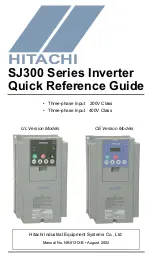
User Manual
10
A
B
C
D
E
Export power
Output power
PV power
Load power
F
Battery power
Fig. 2-6
PV Energy Storage System (PV ESS)
Tab. 2-2
System Compositions
Item
Description
Remark
A
PV strings
Compatible with monocrystalline silicon,
polycrystalline silicon, and thin-film without
grounding.
B
Inverter
SH5K-20.
C
Energy meter
(single-phase for
example)
Measures the export power and communicates
with the inverter via the RS485 port.
D
Utility grid
Grid grounding system types: TT, TN
E
Household load
Devices that consume energy.
F
Battery (optional)
A Li-ion battery or a lead-acid battery.
For the TT utility grid, the N line voltage to ground must be 30 V or less.
Energy Management during Daytime
The energy management system (EMS) works in self-consumption mode by
default.
Scenario 1: PV power generation
≥
Load power consumption
−
First
,
PV power will go to emergency loads first, then loads and the battery.
−
Moreover
,
If the battery is fully charged, the excess will go to the grid. The
feed-in power will not surpass the feed-in limitation value in initial settings.
Scenario 2: PV power generation
<
Load power consumption
−
First
,
battery will discharge and provide the energy missing.
−
Moreover
,
inverter will draw power from the mains if the power from the PV
















































